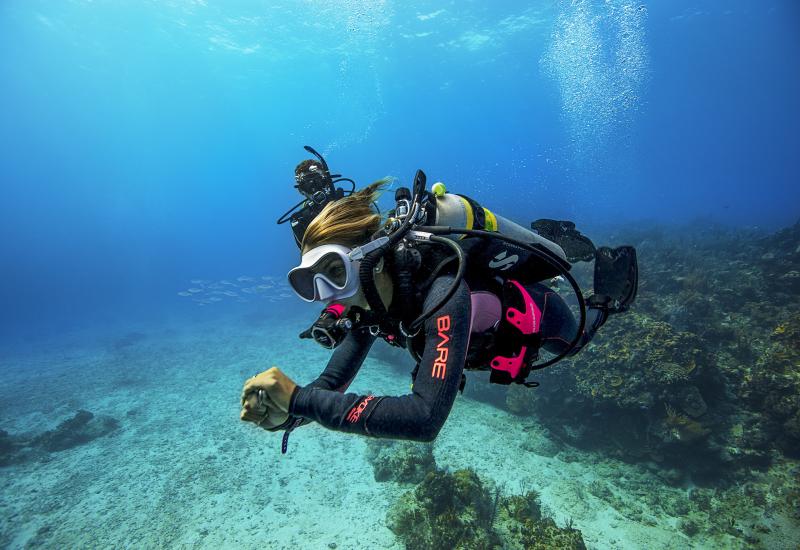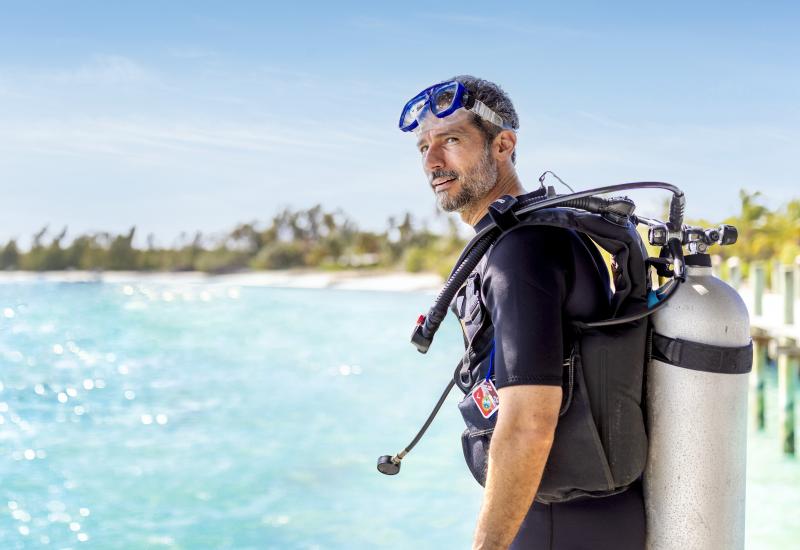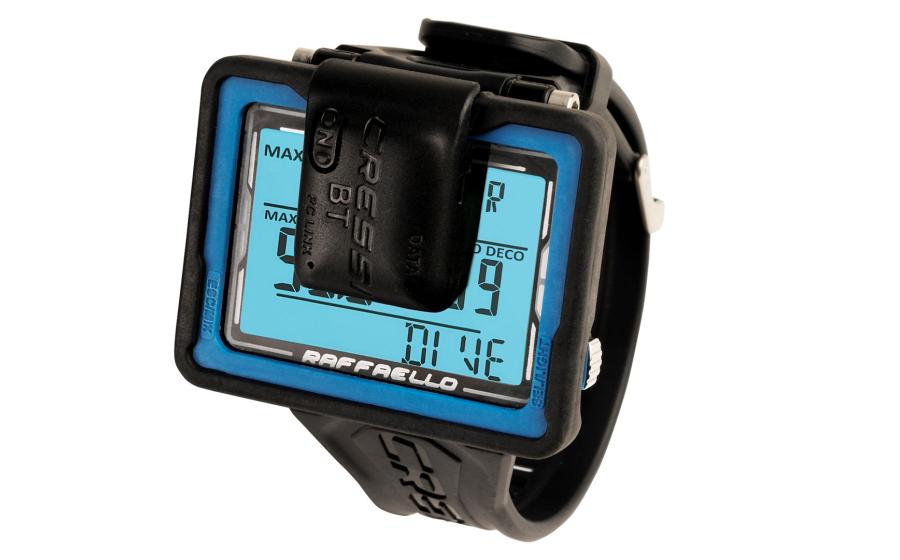Solo Scuba Diving: How To Safely Dive Alone and Expert Tips
Scuba divers know that anything is possible underwater — as long as you have the right training. The article below will tell you all about solo diving, who should do it and what tips will help divers be successful and safe. To keep yourself up-to-date on the latest scuba training updates, skills and tips for becoming a better diver, check out some of these scuba training articles:

Tim CalverScuba diving solo is common for many underwater photographers, but to try this on your own you'll need the proper training and scuba gear.
Sometimes, you just want to be alone.
As divers, we’re taught from day one that scuba is a team sport — well, a team of two, anyway. The buddy system is a proven safety net, offering the increased benefit of redundant-air supplies, electronics — and brains. For decades we’ve found tactical support and emotional comfort in knowing that help is just a hand signal away. But sometimes we just want to get away by ourselves.
Solo diving once only existed in the realm of technical diving, along with public-safety divers, scientists, underwater photographers, hunters and other highly specialized breeds.
In recent years, however, training agencies have caught up to an increasing demand for recreational instruction and safety protocols covering solo diving.
Today PADI offers a Self Reliant Diver specialty, and SDI offers a Solo Diver course. Both require an advanced certification to qualify for training, along with such prerequisites as minimum age requirements, a high number of logged dives, a secondary-air source and other redundant equipment, and pre-course skills assessment by the instructor. Likewise, more operators around the world are allowing guests with proper training and experience to go it alone, particularly on liveaboards. In the end, training to be a self-reliant diver will only make you a better buddy.
“There are lots of different reasons a person might not want to dive with a buddy,” says Danny Rivera of Good Life Divers in Oyster Bay, New York. The public-safety diver and instructor has been teaching the PADI Self Reliant Diver specialty since 2012. “Logistically speaking, they simply might not have a buddy available. As an instructor, I hear the excuses ‘I can’t go diving since I have no one to dive with,’ and ‘I would love to learn scuba, but I don’t have anyone to take the course with.’ You could wait your whole life for someone else to do what you want to do.”
“True solo diving is even more relaxing than diving with a buddy,” says Kevin Davenport, a PADI Course Director at Nautilus Aquatics in northern Virginia who has been teaching the SDI Solo Diver specialty for nine years. “You have no obligation to check on someone else and wonder if they have or will have any issues. And you can also make up stories and no one will contradict you. Maybe it was a whale shark, maybe it was a shadow — only you really know.”
BE YOUR OWN BUDDY
Because solo divers choose to take an important, foundational safety measure out of their dive plan — their buddy — they must take on added responsibility and be extra prepared for emergencies, both physically and mentally.
“Solo diving is about being self-sufficient,” says Davenport. “The course involves training the diver to carry their buddy: an extra air source. I tell all my students, ‘As long as you are breathing, all problems can be solved underwater.’ Carrying a redundant-air supply helps solve that issue, and when I say extra, I mean that it is not part of the plan and is only to be touched in event of an emergency.”
According to Rivera, you need three foundational elements to be a safe solo diver: “The right attitude or mindset, the right equipment and the right plan.
“Some of the more-obvious risks when diving solo are dealing with any and all emergencies that need to be handled quickly and by the diver, since no one else is around to lend a hand, or a regulator,” he explains. “No one will be there to help get you unstuck from a restriction or to show you the way back to the boat in case you get lost. The solo diver must be prepared to handle everything by himself. It’s 100 percent on you.”
PACK GEAR FOR TWO
Having the right equipment is a crucial part of solo diver training. Without a buddy to rely on in case of gear failure or loss, creating redundancy is a matter of life or death.
“A safe solo dive, like a technical dive, requires a lot of the same redundant equipment,” Rivera advises. “You need at least two independent breathing supplies, two masks, an SMB or lift bag, a reel or spool for an emergency ascent, at least two cutting devices, and spares for all other essential gear, including redundant timing devices or computers.”
For most courses, instructors will focus a large portion of the training on equipment, including proper planning, pre-dive assessment and underwater skills.
“Equipment plays a huge role in determining what is a safe solo dive and an unnecessary risk underwater,” Rivera says. “I teach all my solo students to keep it simple, reachable and redundant.”
PLAN FOR ANYTHING AND EVERYTHING
Diving is an inherently dangerous activity during which we minimize risk through training and following safety protocols. Solo diving increases that risk exponentially. However, with the right planning and mindset, it can be as safe as a traditional buddy dive. According to the instructors, preparation is crucial.
“Self-reliance and a methodical approach to gear assembly are key lessons in my course, in addition to mastering basic skills like buoyancy, navigation, trim and propulsion, plus emergency ascents are covered extensively during the course,” Rivera says. “We plan for the dive where everything goes wrong: Our regulators free-flow, a fin strap breaks midkick, or a mask falls off underwater. You need to have a calm mindset. You can’t be prone to panic at the slightest inconvenience underwater. And you have to be confident and deliberate while handling whatever emergencies come up underwater.”
“It is all about risk mitigation,” Davenport explains. “Anything that could happen with a buddy can happen without a buddy. So every diver must look at the risk of every dive and determine if it is worth doing.”
“Some people just enjoy doing things alone,” Rivera says. “The emphasis within the scuba industry is that diving is a group activity and you need to be an extrovert in order to really enjoy the sport. In some cases, that’s absolutely true, but some divers are looking for the solitude and perspective that diving solo can bring. It’s like a backpacker looking for the one place in the world that the tourists haven’t found yet. Some divers are simply looking for the ‘authentic’ experience without the crowds.”










